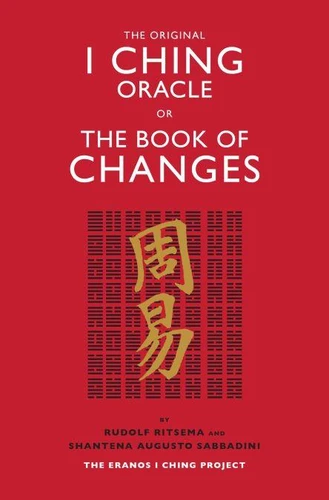The Original I Ching Oracle or The Book of Changes. The Eranos I Ching Project
Par : ,Formats :
Disponible dans votre compte client Decitre ou Furet du Nord dès validation de votre commande. Le format ePub protégé est :
- Compatible avec une lecture sur My Vivlio (smartphone, tablette, ordinateur)
- Compatible avec une lecture sur liseuses Vivlio
- Pour les liseuses autres que Vivlio, vous devez utiliser le logiciel Adobe Digital Edition. Non compatible avec la lecture sur les liseuses Kindle, Remarkable et Sony
- Non compatible avec un achat hors France métropolitaine
 , qui est-ce ?
, qui est-ce ?Notre partenaire de plateforme de lecture numérique où vous retrouverez l'ensemble de vos ebooks gratuitement
Pour en savoir plus sur nos ebooks, consultez notre aide en ligne ici
- Nombre de pages864
- FormatePub
- ISBN978-1-78678-165-9
- EAN9781786781659
- Date de parution15/05/2018
- Protection num.Adobe DRM
- Taille7 Mo
- Infos supplémentairesepub
- ÉditeurWatkins Publishing
Résumé
Often referred to as the Eranos edition, this revised and updated translation offers the most substantial advance in I Ching since Richard Wilhelm introduced the oracle to the West in the 1920s. The I Ching is one of the oldest Chinese texts and the world's oldest oracle. Accumulated from over 2, 500 years of diviners, sages and shamans and born out of the oral tradition, the I Ching as we know it today is a collection of texts, imagery and advice, philosophy and poetry, divided into 64 chapters.
There are 64 hexagrams, created from a collection of six lines, either broken or solid. In order to "read" from the book, you must cast a hexagram. The traditional method required yarrow sticks but nowadays is based on tossing three coins six times. The Original I Ching Oracle or Book of Changes was inspired by Carl Gustav Jung's insights into the psyche and researched for more than 60 years through the Eranos Foundation of Switzerland.
It presents the oracular core of the I Ching as a psychological tool: the symbols interact with our minds in the same way dream images do.
There are 64 hexagrams, created from a collection of six lines, either broken or solid. In order to "read" from the book, you must cast a hexagram. The traditional method required yarrow sticks but nowadays is based on tossing three coins six times. The Original I Ching Oracle or Book of Changes was inspired by Carl Gustav Jung's insights into the psyche and researched for more than 60 years through the Eranos Foundation of Switzerland.
It presents the oracular core of the I Ching as a psychological tool: the symbols interact with our minds in the same way dream images do.
Often referred to as the Eranos edition, this revised and updated translation offers the most substantial advance in I Ching since Richard Wilhelm introduced the oracle to the West in the 1920s. The I Ching is one of the oldest Chinese texts and the world's oldest oracle. Accumulated from over 2, 500 years of diviners, sages and shamans and born out of the oral tradition, the I Ching as we know it today is a collection of texts, imagery and advice, philosophy and poetry, divided into 64 chapters.
There are 64 hexagrams, created from a collection of six lines, either broken or solid. In order to "read" from the book, you must cast a hexagram. The traditional method required yarrow sticks but nowadays is based on tossing three coins six times. The Original I Ching Oracle or Book of Changes was inspired by Carl Gustav Jung's insights into the psyche and researched for more than 60 years through the Eranos Foundation of Switzerland.
It presents the oracular core of the I Ching as a psychological tool: the symbols interact with our minds in the same way dream images do.
There are 64 hexagrams, created from a collection of six lines, either broken or solid. In order to "read" from the book, you must cast a hexagram. The traditional method required yarrow sticks but nowadays is based on tossing three coins six times. The Original I Ching Oracle or Book of Changes was inspired by Carl Gustav Jung's insights into the psyche and researched for more than 60 years through the Eranos Foundation of Switzerland.
It presents the oracular core of the I Ching as a psychological tool: the symbols interact with our minds in the same way dream images do.



